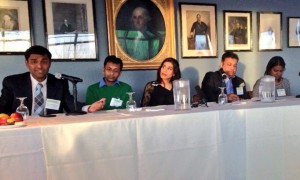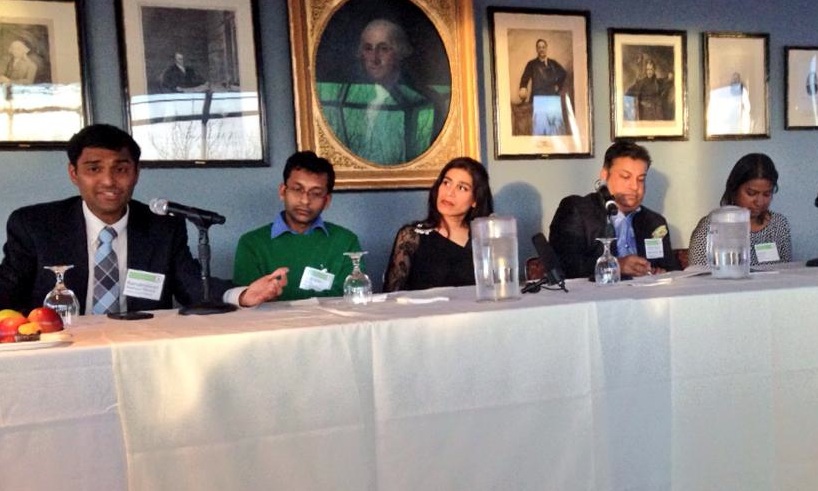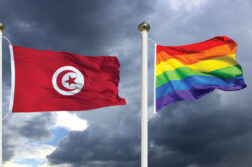
ANOTHER FIRST! The “India Conference at Harvard” is an annual, weekend-long, high-visibility event held at the Kennedy School of Government (on February 15th and 16th). This year, for the first time, the conference featured a panel expressly devoted to gay issues, titled “LGBT Rights in India: The Way Forward.”
The need for such a panel now can be traced to a recent ruling by the Indian Supreme Court that reinstated Section 377, a relic of the British colonial era that outlaws “carnal intercourse against the order of nature.” The notorious law had been struck down by a lower court in 2009, and it seemed that India was joining the modern world on this issue. Thus the reversal on Dec. 11, 2013, came as a shocking blow to the GLBT movement in South Asia and around the civilized world.
The five panelists were there to discuss “the way forward” in the wake of this turn of events. All five had roots in India, though four of them were émigrés living in various parts of the U.S. Consequently, the picture that emerged of the current situation in India was based mostly on second-hand sources and communications with contacts and organizations in South Asia.
However dismayed they were by the 377 ruling itself, the panelists were generally encouraged by domestic and world reaction to the ruling, which does appear to have energized the LGBT rights movement in India, stimulating greater organizational efforts in the large cities and bringing out some protests of modest scale. Still, anyone hoping for a “Stonewall moment” would be disappointed by the caution with which these efforts appear to be moving forward. One panelist remarked that a “queer Gandhi” has not arrived on the scene because Indian culture is simply not ready for a truly public discussion of gay rights.
Several panelists noted the importance of the Internet and social media in uniting the LGBT movement—or at least various subsets thereof—but there was relatively little talk of boots on the ground demonstrating for gay rights. Siddharth Narrain, a lawyer based in India spending a year at Harvard Law School, observed that the interval between the Bowers v. Hardwick ruling (1986) and its reversal in the Lawrence case (2003) was seventeen years—a cautionary tale for Indian activists. On the other hand, Indian law allows citizens to petition the Supreme Court to reconsider a ruling, and such a petition is indeed circulating to reverse the 377 reinstatement. A legislative remedy is also feasible but clearly not a near-term possibility.
The focus turned to what can be done outside of the government sphere. Software engineer Ramakrishnan Kazhiyur-Mannar, while based in San Francisco, is working to get companies doing business in India to institute policies favorable to GLBT rights. Amit Dixit, who helped organize the panel, addressed the power of grassroots organizations to mobilize a response to local events. Choreographer Mesma Belsara stressed the global nature of the gay rights movement and the need to change attitudes in mainstream Indian society—a slow process, to be sure, but one that has now begun.
The panel itself can perhaps best be seen in this light. The prestige of the India Conference at Harvard is such that very existence of a panel devoted to LGBT rights in response to the Supreme Court ruling sends a message to politicians and judges in India that the world is watching what they do. It is painfully ironic that Section 377 is a legacy of British rule, when the UK itself, along with the rest of the English-speaking world—of which India is so much a part—has moved on and embraced LGBT equality as a reachable goal.







Discussion1 Comment
I feel India’s and Asian consent for gay rights is essential to set an example to world religions that the rest of us can follow. It has been too long that the Asian continient has kept it’s homosexuality underground and unrepresented. The difference is in the structure of Government of what the state chooses to observe and what the voice of the people has to say. I feel if India and the Orient only knew of the religious and Civic influence it has with the west that it may share on common ground the liberation of all such universal genders that are oppressed.